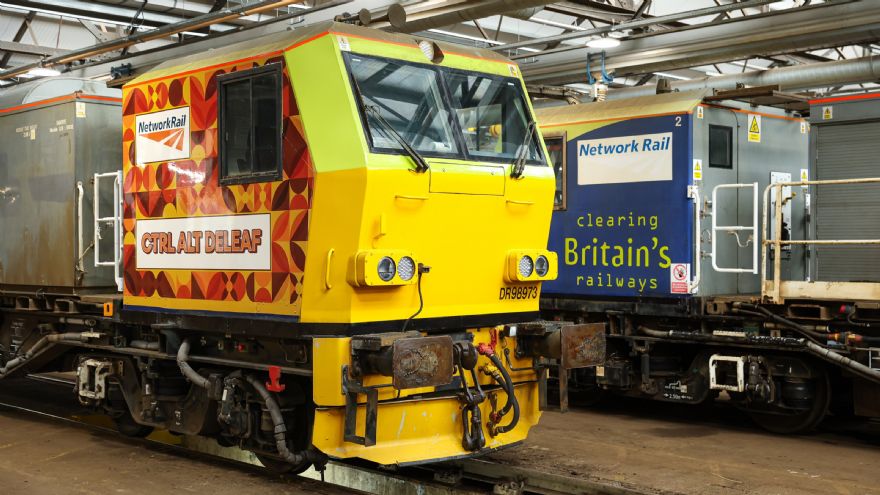 Network Rail
Network Rail has invested over £100 million to tackle ‘leaves on the line’, the annual scourge for Britain’s railways and railways across the world, as damp, compressed leaves become the railway equivalent of black-ice on the road and in turn lead to slow running, delays and disruption. This season there is a new leaf-busting train, ‘Ctrl Alt Deleaf’, which was so named by the public in a nationwide vote.
Featuring distinctive livery, it was rolled out for the first time towards the end of September from a depot at Effingham Junction, Surrey. Its mission, along with an entire fleet of similar leaf-busters, is ‘blast leaf-mulch off the rails’; together, they will treat some 1.12 million miles over the autumn, to keep the tracks clean and keep journeys running smoothly across the country.
Across the Wessex route alone, which connects London with Surrey, Hampshire, Dorset, Wiltshire, Somerset and Devon, ‘Ctrl Alt Deleaf’ and its leaf-fighting partners will cover close to 170,000 miles (‘Ctrl Alt Deleaf’ beat thousands of other contenders in the nationwide naming vote, overcoming contenders like ‘Leaf-Fall Weapon’, ‘Pulp Friction’, and ‘The Autumn Avenger’).
Sand-applying technologyLast year, 39 SWR (South Western Railway) Class 158 and 159 trains were fitted with ‘SWR-inspired and Network Rail-funded’ sand-applying technology to boost rail adhesion in wet conditions. This system will be used again this autumn after a successful first year in service. These sand applicators can distribute up to 5kg of sand onto the tracks per minute, and automatically apply sand when a train is braking, significantly reducing the distance it takes a train to stop.
Network Rail is also using Interflon LeafGuard, a rail cleaner that is quick-acting and does not require rinsing or wiping. Applied either by hand or via a ‘Sand Rover’, which is a specially adapted 4x4 Land Rover that can travel on rails and on the roads and scrapes leaf mulch off the tracks with specially mounted wire brushes, this solution ‘self cleans’ and leaves behind a micro layer that is reactivated by rainwater and moisture, keeping the rail head surface clean for longer.
Drones are also being deployed to aerially inspect the railway and reduce the need for line closures, while high-definition video cameras mounted on the front of trains will capture high-definition images and video to help maintenance teams identify areas that need extra attention.